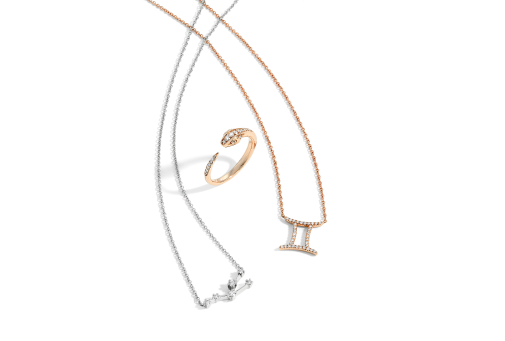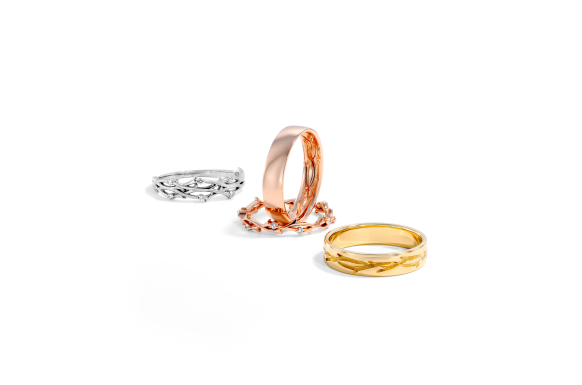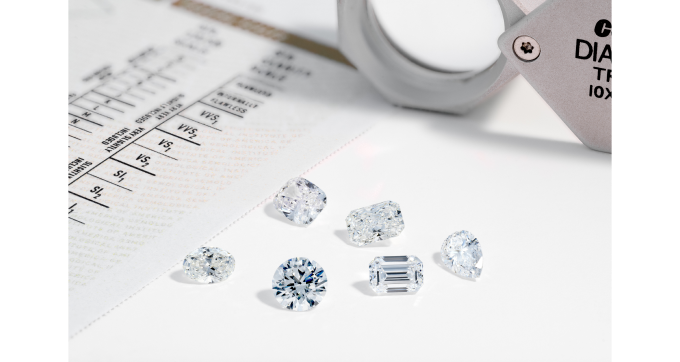Sparkle
Education Center
Education CenterEverything You Need to Know About Diamond Sparkle
Ever wondered how diamonds get their distinctive and magical sparkle? In diamond science, sparkle is the result of just 3 things: brilliance, scintillation, and fire. In this guide we look at all 3 and at factors that maximize each of them.
What is Fire?
When light hits a diamond, its facets act like a prism and refract light. This produces multi-colored sparkles - the same kind you see in a rainbow.
What is Brilliance?
Brilliance is the white light-reflective aspect of a diamond’s sparkle. It comes from the internal and external reflection of white light off a diamond’s facets. Brilliance creates bright white flashes that give diamonds their signature look.
What is Scintillation?
Diamond scintillation refers to the play of light across a stone’s facets. Scintillation is most visible in motion - like when the diamond, the lighting, or the viewer move. It adds life and sparkle to a diamond. You can think of it as light flashing in an on-off or checkered pattern.
Flash vs Fire Scintillation
Flash and Fire scintillation refer to white light visible on a diamond’s crown.
In our experience, shapes with many small facets tend to have more fire scintillation. The round brilliant cut is a good example; it can have lots of colored light. Shapes with bigger crown facets tend to have more flash scintillation. You can see more white light than colored light on them - again, in our experience.
Moissanite tends to have more fire scintillation than diamonds. It tends to reflect more colored light than white light, especially with crushed ice stones.
Slow-moving scintillation means that light goes from facet to facet slowly. Step-cut stones with large facets, like the Asscher, tend to have lots of slow-moving scintillation. Fast-moving scintillation means that light jumps from facet to facet quickly. Brilliant cuts, like the round and the oval, tend to have lots of fast-moving scintillation.
Getting More Sparkle with the 4 C’s
The simplest way to maximize a diamond’s sparkle is to use the 4C’s to your advantage. Here’s how you can do that.
Cut
In a well-cut stone - “good” cut grades and up - upper and lower girdle facets are angled to maximize scintillation, fire, and brilliance. Pavilion depth is just right, keeping as much light inside the stone as possible. The amount of light reflected and refracted through the crown is as high as possible.
With a poorly cut stone, the opposite is true. Facets are positioned in a way that reduces scintillation. Light escapes through the side and bottom of the stone. Sparkle is lost and you get a dull, lifeless diamond.
The type of cut used matters too. As a rule, more facets means more sparkle. A brilliant cut, like a radiant or round brilliant, has lots of facets and lots of sparkle.
Clarity
Diamonds with low clarity may have imperfections that stop light from reflecting and refracting properly. Eye-clean diamonds generally have excellent sparkle, assuming they’re well-cut. Before purchasing a diamond, you can see if a diamond is eye-clean or not using our 3D preview.
Conclusion
Most diamonds should display fire qualities but the amount of fire won’t be the same for every diamond. So if you want a fiery ring that truly dazzles and delights, look for high cut quality and clarity. With these qualities considered, you can find a diamond with high fire and sparkle.



